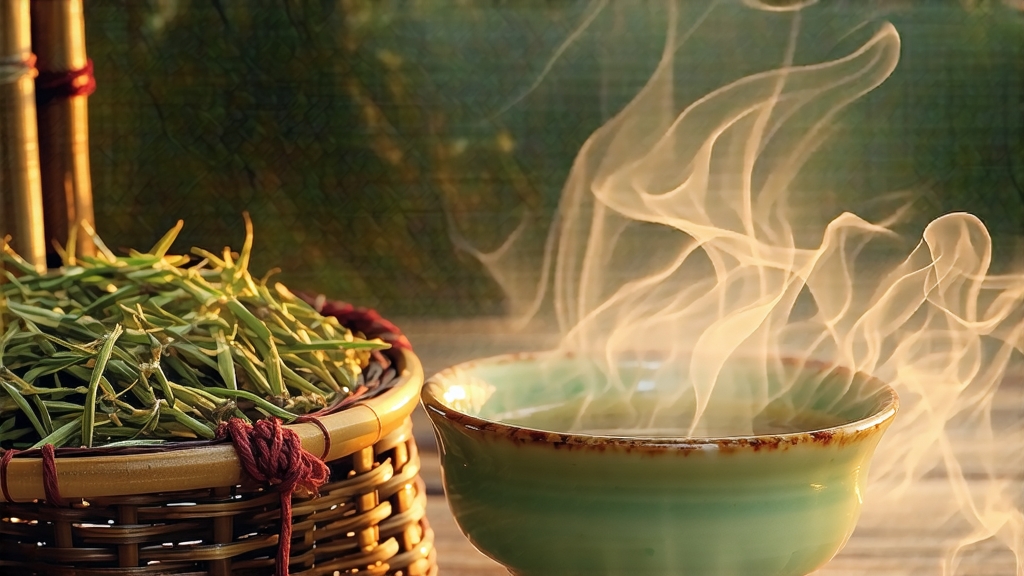
Meng Ding Huang Ya, literally “the yellow bud from Meng Summit,” is the least-known yet most aristocratic member of China’s micro-category of yellow tea. While green tea commands global fame and dark pu-erh fills investment portfolios, yellow teas remain a whispered secret among Chinese tea insiders. Meng Ding Huang Ya is that whisper from 3,000 years ago, still echoing across the cloud-locked ridges of Ya’an, Sichuan.
History: from altar to emperor
The first written record appears in a Zhou-dynasty ritual text (1046–256 BCE) listing “meng ding” among teas offered at the ancestral altar of the Shu kingdom. By the Tang dynasty (618–907 CE) the bud had become tribute; caravans carried compressed cakes southward to join the Silk Road’s tea-horse caravans. Song emperor Huizong (r. 1100–1126), himself a tea connoisseur, declared Meng Ding one of “the thirteen waterside immortals,” a poetic way of saying it was too precious for common cups. In 1838 the Daoguang emperor reaffirmed its status as first-rank spring tribute, and 200 kg of freshly yellowed buds were rushed by fast horse to Beijing within 18 days of plucking. After the fall of the Qing, the technique almost vanished; only a handful of Buddhist monks on Meng Ding peak kept the flame alive. When China opened in the 1980s, agronomists traced the monks, recovered the process, and re-established micro-gardens at exactly 1,450 m above sea level.
Terroir: where clouds graze the tea
Meng Ding range is the easternmost spur of the Tibetan Plateau. Warm, moisture-laden clouds from the Sichuan basin collide with cold plateau winds, creating a 280-day-a-year fog belt. The diffused light forces the tea bush (Sinensis var. sinensis, local clone “Huang Ya Zao”) to produce extra theanine and fewer bitter catechins. Soils are yellow-brown laterite rich in selenium and fluorine, but the roots never touch standing water because the mountain slopes at 28° drain instantly. Night temperatures can drop 12 °C below daytime highs, shocking the leaf into locking in floral aromatics that will later be coaxed out during yellowing.
Plucking: one bud, one leaf, one dew
The picking window opens on the first day after Grain Rain (around 20 April) and closes before May Day—about ten mornings. Only the bud and the first unfolding leaf, still soft as silk, are taken. Length must be 18–22 mm; weight must be 0.12–0.15 g. Experienced pickers use a “twist-lift” motion that severs the petiole without bruising the stem, preventing premature oxidation. Leaves are laid in shallow bamboo trays lined with hemp cloth; any direct sunlight is blocked by black gauze umbrellas carried by the pickers themselves.
Craft: the art of “sealed yellowing”
Yellow tea’s defining step is a second, gentle enzymic oxidation conducted under humid cover, a phase Chinese technicians call men huang—“sealed yellowing.” For Meng Ding Huang Ya this happens twice.
- Kill-green: 4 minutes at 140 °C on a bamboo-fired drum wok, hand-tossed to 60 % moisture. The goal is to destroy leaf-surface enzymes while keeping inner-cell activity alive.
- First wrapping: the hot leaf is immediately piled in 250 g bundles wrapped in cotton cloth, then buried inside a 40 cm-deep bamboo chest lined with wet straw. Core temperature is held at 55 °C for 90 minutes; the leaf turns faintly lemon-yellow.
- Re-firing: bundles are opened and given a 30-second “flash” at 120 °C to re-activate residual moisture.
- Second wrapping: same as step 2, but temperature lowered to 45 °C for 4 hours. Aromas shift from grassy to steamed corn milk.
- Slow drying: final moisture is reduced to 5 % using three passes on a 60 °C bamboo basket dryer, each pass lasting 40 minutes with 20 minutes rest in between. The finished tea smells of fresh chestnut and raw cacao; the liquor steeps into the color of late-harvest white wine.
Grades & styles
Im